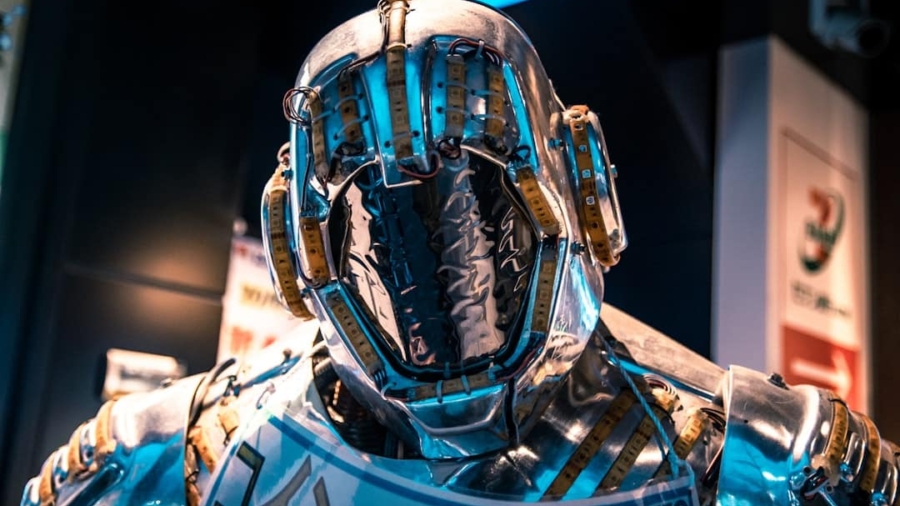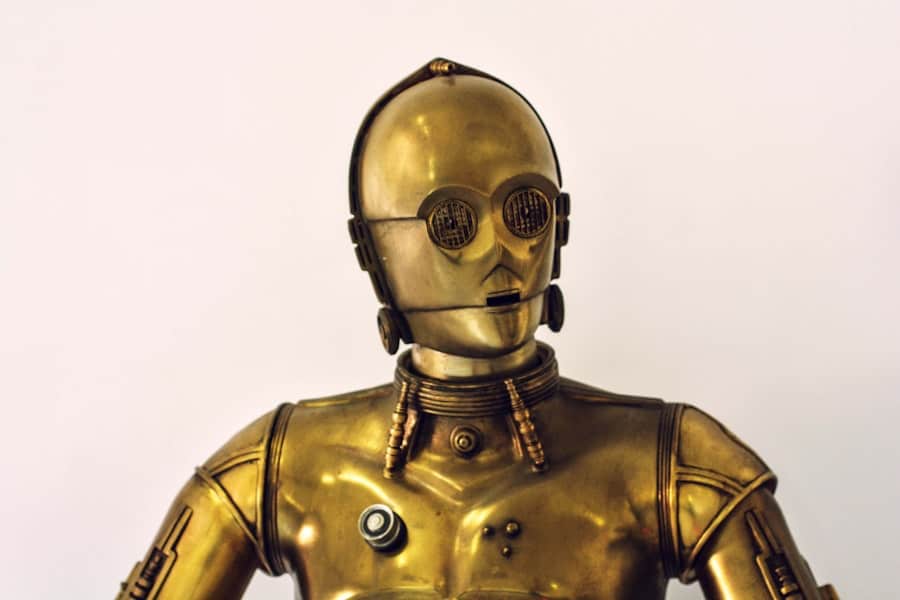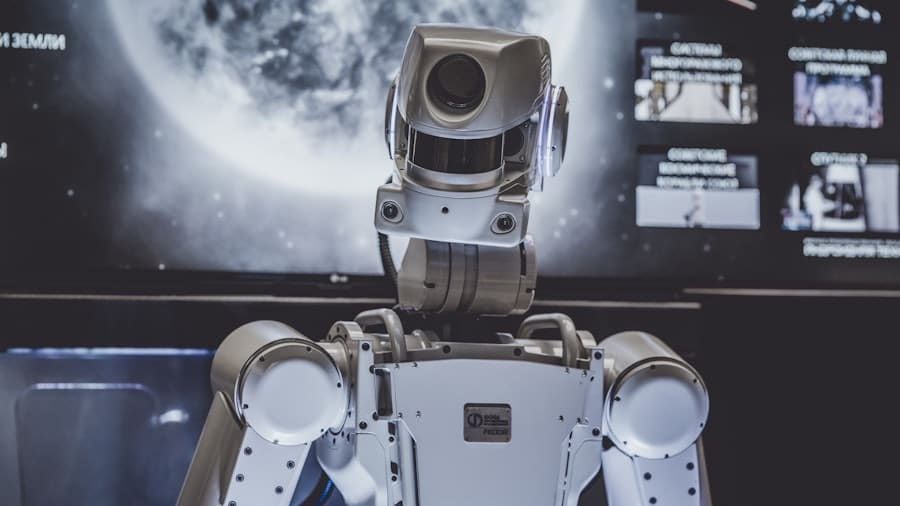The integration of artificial intelligence (AI) into robotics has revolutionized various sectors, with customer service being one of the most significantly impacted areas. AI-driven robotics encompasses a range of technologies that enable machines to perform tasks traditionally carried out by humans, enhancing efficiency and effectiveness in customer interactions. These robots are equipped with advanced algorithms, machine learning capabilities, and natural language processing, allowing them to understand and respond to customer inquiries in real-time.
As businesses increasingly seek to improve their customer service operations, the adoption of AI-driven robotics has become a strategic imperative. The rise of AI-driven robotics in customer service is not merely a trend; it represents a fundamental shift in how companies engage with their customers. From chatbots that handle inquiries on websites to physical robots that assist customers in retail environments, these technologies are designed to streamline processes and enhance user experiences.
The ability of AI-driven robots to analyze vast amounts of data and learn from interactions enables them to provide personalized service, anticipate customer needs, and resolve issues more efficiently than ever before. This transformation is reshaping the landscape of customer service, making it more responsive and tailored to individual preferences.
Key Takeaways
- AI-driven robotics in customer service is revolutionizing the way businesses interact with their customers, providing personalized and efficient support.
- AI-driven robotics play a crucial role in delivering personalized customer service by analyzing data, predicting customer needs, and offering tailored solutions.
- Advancements in AI-driven robotics for customer service include natural language processing, machine learning, and predictive analytics, enabling more sophisticated and human-like interactions.
- The impact of AI-driven robotics on customer experience is significant, as it improves response times, accuracy, and overall satisfaction, leading to increased customer loyalty and retention.
- Despite the potential benefits, challenges and limitations of AI-driven robotics in customer service include privacy concerns, technical limitations, and the need for human oversight to ensure ethical and responsible use of the technology.
The Role of AI-Driven Robotics in Personalized Customer Service
Personalization has become a cornerstone of effective customer service, and AI-driven robotics plays a pivotal role in achieving this goal. By leveraging data analytics and machine learning, these systems can gather insights about customer behavior, preferences, and past interactions. For instance, when a customer contacts a support line, an AI-driven system can access their purchase history and previous inquiries to provide tailored solutions.
This level of personalization not only enhances the customer experience but also fosters loyalty and trust between the consumer and the brand. Moreover, AI-driven robotics can adapt their responses based on real-time feedback from customers. For example, if a chatbot detects frustration in a customer’s tone or language, it can escalate the issue to a human representative or adjust its approach to better address the customer’s concerns.
This dynamic interaction allows for a more nuanced understanding of customer needs, enabling businesses to deliver solutions that resonate on a personal level. The ability to provide customized experiences at scale is one of the most significant advantages of integrating AI-driven robotics into customer service frameworks.
Advancements in AI-Driven Robotics for Customer Service
The field of AI-driven robotics is rapidly evolving, with continuous advancements enhancing their capabilities in customer service. One notable development is the improvement in natural language processing (NLP), which allows robots to understand and generate human-like responses more effectively. This advancement has led to the creation of conversational agents that can engage customers in meaningful dialogues, making interactions feel more personal and less mechanical.
Companies like Google and Amazon have invested heavily in NLP technologies, resulting in chatbots that can handle complex queries with ease. Additionally, the integration of machine learning algorithms has enabled AI-driven robots to learn from each interaction, refining their responses over time. For instance, if a customer frequently asks about specific products or services, the system can recognize this pattern and proactively offer relevant information during future interactions.
This predictive capability not only enhances efficiency but also demonstrates a deep understanding of customer preferences. Furthermore, advancements in robotics hardware have led to the development of physical robots capable of assisting customers in retail environments, providing information, and even guiding them through stores.
The Impact of AI-Driven Robotics on Customer Experience
The impact of AI-driven robotics on customer experience is profound and multifaceted. One of the most significant benefits is the enhancement of response times. Traditional customer service methods often involve long wait times for human representatives, leading to frustration among customers.
In contrast, AI-driven systems can provide instant responses to inquiries, significantly reducing wait times and improving overall satisfaction. For example, companies like Zappos have implemented AI chatbots that can handle thousands of inquiries simultaneously, ensuring that customers receive timely assistance regardless of volume. Moreover, AI-driven robotics can operate around the clock, providing support outside of regular business hours.
This 24/7 availability caters to a global audience and accommodates customers in different time zones. The convenience of having access to assistance at any time enhances the overall customer experience and positions businesses as responsive and customer-centric. Additionally, by automating routine inquiries and tasks, human agents can focus on more complex issues that require empathy and critical thinking, further elevating the quality of service provided.
Challenges and Limitations of AI-Driven Robotics in Customer Service
Despite the numerous advantages offered by AI-driven robotics in customer service, several challenges and limitations persist. One significant concern is the potential for miscommunication between robots and customers. While advancements in NLP have improved understanding, there are still instances where robots may misinterpret queries or fail to grasp nuances in language.
This can lead to frustration for customers who expect accurate and relevant responses. For example, a chatbot might struggle with idiomatic expressions or regional dialects, resulting in ineffective communication. Another challenge lies in the emotional intelligence aspect of customer service.
While AI-driven systems can analyze data and respond logically, they often lack the empathy and emotional understanding that human agents bring to interactions. In situations where customers are experiencing frustration or distress, a robotic response may feel cold or inadequate. This limitation highlights the importance of finding a balance between automation and human touch in customer service strategies.
Businesses must carefully consider when to deploy AI-driven solutions and when to rely on human representatives to ensure that customers feel heard and valued.
Ethical Considerations in AI-Driven Robotics for Customer Service
The deployment of AI-driven robotics in customer service raises several ethical considerations that must be addressed by organizations. One primary concern is data privacy and security. As these systems collect vast amounts of personal information to provide personalized services, there is an inherent risk associated with data breaches or misuse.
Companies must implement robust security measures to protect customer data and ensure compliance with regulations such as the General Data Protection Regulation (GDPR). Transparency regarding data usage is also crucial; customers should be informed about how their information is collected and utilized. Additionally, there are ethical implications related to job displacement as automation becomes more prevalent in customer service roles.
While AI-driven robotics can enhance efficiency and reduce costs for businesses, they may also lead to job losses for human workers who traditionally performed these tasks. Organizations must consider strategies for reskilling employees whose roles may be affected by automation. This could involve providing training programs that equip workers with new skills relevant to an evolving job market or transitioning them into roles that require human interaction and emotional intelligence.
Future Trends and Predictions for AI-Driven Robotics in Customer Service
Looking ahead, several trends are likely to shape the future of AI-driven robotics in customer service. One prominent trend is the increasing integration of voice recognition technology into customer service platforms. As voice-activated devices become more commonplace, businesses will likely adopt voice-based interfaces for customer interactions.
This shift could lead to more natural conversations between customers and robots, further enhancing personalization and user experience. Another trend is the rise of hyper-personalization driven by advanced analytics and machine learning algorithms. As companies gather more data about their customers’ behaviors and preferences, they will be able to tailor services even more precisely.
For instance, predictive analytics could enable businesses to anticipate customer needs before they arise, offering proactive solutions that enhance satisfaction. Additionally, as technology continues to advance, we may see the emergence of emotionally intelligent robots capable of recognizing and responding appropriately to human emotions during interactions.
The Potential of AI-Driven Robotics in Transforming Customer Service
The potential of AI-driven robotics in transforming customer service is immense, offering opportunities for enhanced efficiency, personalization, and overall customer satisfaction.
By striking a balance between automation and human interaction, organizations can leverage AI-driven robotics to create a more responsive and engaging customer service experience.
As advancements continue to unfold in this field, it is clear that AI-driven robotics will play an increasingly central role in shaping the future of customer service. The ability to provide instant support around the clock while delivering personalized experiences positions businesses at the forefront of innovation in customer engagement strategies. Ultimately, those who successfully integrate these technologies while addressing ethical concerns will likely emerge as leaders in their respective industries.
In a world where technology is constantly evolving, the future of AI-driven robotics in personalized customer service is becoming increasingly important. As companies strive to provide more efficient and tailored experiences for their customers, the use of artificial intelligence and robotics is becoming more prevalent. For those interested in exploring the world of design and animation, this article on the best software for 3D animation may be of interest.
FAQs
What is AI-driven robotics in personalized customer service?
AI-driven robotics in personalized customer service refers to the use of artificial intelligence and robotics to provide tailored and individualized customer support and assistance. This technology allows businesses to offer more efficient and effective customer service experiences by leveraging AI to understand and respond to customer needs.
How does AI-driven robotics benefit personalized customer service?
AI-driven robotics in personalized customer service offers several benefits, including improved efficiency, 24/7 availability, personalized interactions, and the ability to handle repetitive tasks. This technology can also lead to cost savings for businesses and improved customer satisfaction.
What are some examples of AI-driven robotics in personalized customer service?
Examples of AI-driven robotics in personalized customer service include chatbots that can engage in natural language conversations with customers, robotic process automation for handling routine tasks, and AI-powered recommendation systems that offer personalized product suggestions based on customer preferences.
What are the potential challenges of AI-driven robotics in personalized customer service?
Challenges of AI-driven robotics in personalized customer service may include concerns about data privacy and security, the need for ongoing maintenance and updates to AI systems, and the potential for job displacement as automation takes over certain tasks. Additionally, ensuring that AI systems provide accurate and empathetic customer interactions can be a challenge.
How is AI-driven robotics expected to evolve in the future of personalized customer service?
In the future, AI-driven robotics in personalized customer service is expected to become more sophisticated, with advancements in natural language processing, emotional intelligence, and the ability to handle complex customer inquiries. Additionally, AI-driven robotics may be integrated with other emerging technologies such as augmented reality to provide even more personalized and immersive customer experiences.



